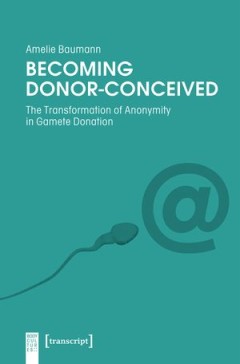Filter by

Late Quaternary landscape evolution of the Swale-Ure washlands, North Yorkshire
Reporting on a multi-disciplinary project this book seeks to reconstruct the history since the last glaciation of the area between and including the middle reaches of the Rivers Swale and Ure in Yorkshire. Included in this history are both natural changes, determined from studies of landforms and sediments, and human-induced changes, recorded in archaeological and geo-archaeological records. Th…
- Edition
- -
- ISBN/ISSN
- 978-1-84217-374-9
- Collation
- -
- Series Title
- -
- Call Number
- 551.793 094 284 LAT

Gunnar Landtman in Papua : 1910 to 1912
Despite poverty and neglect the coastal Kiwai of the northern Torres Strait and Fly estuary are a strong and vibrant people with a long tradition of work in the marine industries of the Torres Strait. Regrettably their current social, economic and political problems are marginal to both Papua New Guinea and Australia. Gunnar Landtman’s research, undertaken between 1910 and 1912, is still a fo…
- Edition
- -
- ISBN/ISSN
- 9781921666131
- Collation
- -
- Series Title
- -
- Call Number
- 572.995 2 LAW g

The Great Forest : An Appalachian Story
The very ancient Eastern forest of North America is characterized by an extraordinary variety of plants, animals, and human communities. Published in 1985 and edited by Barry M. Buxton (1st edition) and Sam Gray (2nd edition), contributors to A Great Forest: An Appalachian Story, include Sam Gray and Michael Ann Williams; Ann Rogers; Tyler Blethen and Curtis Wood; Ronald D. Eller; and Harley E.…
- Edition
- -
- ISBN/ISSN
- 9781469638454
- Collation
- -
- Series Title
- -
- Call Number
- 577.3 GRE

The Impact of Migration on Poland
How has the international mobility of Polish citizens intertwined with other influences to shape society, culture, politics and economics in contemporary Poland? The Impact of Migration on Poland offers a new approach for understanding how migration affects sending countries, and provides a wide-ranging analysis of how Poland has changed, and continues to change, since EU accession in 2004. The…
- Edition
- -
- ISBN/ISSN
- 9781787350687
- Collation
- -
- Series Title
- -
- Call Number
- 572.9 GRA i

Cultural Integration of Immigrants in Europe
The concepts of cultural diversity and cultural identity are at the forefront of the political debate in many western societies. In Europe, the discussion is stimulated by the political pressures associated with immigration flows, which are increasing in many European countries. The imperatives that current immigration trends impose on European democracies bring to light a number of issues that…
- Edition
- -
- ISBN/ISSN
- 9780199660094
- Collation
- -
- Series Title
- -
- Call Number
- 572.9 BIS c

Migrationsschule
At school, not only arithmetic and writing is taught. Pupils also learn to behave male or female, which means to be poor or rich - and to distinguish who is considered ""foreigner"" and who is not. In order to understand the significance of migration and ethnicity in everyday school life, the author accompanied and observed teachers and pupils at a new middle school in Tyrol. The resulting obse…
- Edition
- -
- ISBN/ISSN
- 9783903122765
- Collation
- -
- Series Title
- -
- Call Number
- 572.9 STR m

Migrants and Literature in Finland and Sweden
Migrants and Literature in Finland and Sweden presents new comparative perspectives on transnational literary studies. This collection provides a contribution to the production of new narratives of the nation. The focus of the contributions is contemporary fiction relating to experiences of migration. The volume discusses multicultural writing, emerging modes of writing and generic innovations.…
- Edition
- -
- ISBN/ISSN
- 9789518580358
- Collation
- -
- Series Title
- -
- Call Number
- 572.9 RAN m

Passages Westward
The West has always been a resource for the Finns. Scholars, artists and other professionals have sought contacts from Europe throughout the centuries. The Finnish experience in Western Europe and the New World is a story of migrant laborers, expatriates and specialists working abroad. But you don’t have to be born in Finland to be a Finn. The experiences of second-generation Finnish immigran…
- Edition
- -
- ISBN/ISSN
- 9789518580679
- Collation
- -
- Series Title
- -
- Call Number
- 572.9 SNE p

Becoming Donor-Conceived : The Transformation of Anonymity in Gamete Donation
While it has been argued that anonymity in gamete donation has been brought to an end by legal changes and technological developments, Amelie Baumann suggests that this is in fact still in transformation. By focusing on the narratives of those who were conceived with anonymously donated gametes in the UK and Germany, she examines this transformative process and the role which donor-conceived pe…
- Edition
- -
- ISBN/ISSN
- 978-3-8394-5731-3
- Collation
- -
- Series Title
- -
- Call Number
- 571.845 BAU b

The Reindeer Botanist : Alf Erling Porsild, 1901-1977
This well-researched book is the first biography of one of Canadas most remarkable botanists. Alf Erling Porsild (1901-1977) grew up on the Arctic Station in West Greenland and later served as curator of botany at the National Museum of Canada. He collected thousands of specimens, greatly enlarging the National Herbarium and making it a superb research centre. For nearly twenty years, Porsild s…
- Edition
- -
- ISBN/ISSN
- 978-1-55238-588-3
- Collation
- -
- Series Title
- Northern lights, 1925-2943 ; 14
- Call Number
- 580.92 DAT r
 Computer Science, Information & General Works
Computer Science, Information & General Works  Philosophy & Psychology
Philosophy & Psychology  Religion
Religion  Social Sciences
Social Sciences  Language
Language  Pure Science
Pure Science  Applied Sciences
Applied Sciences  Art & Recreation
Art & Recreation  Literature
Literature  History & Geography
History & Geography